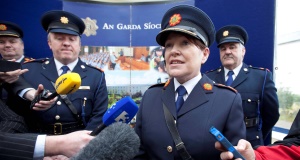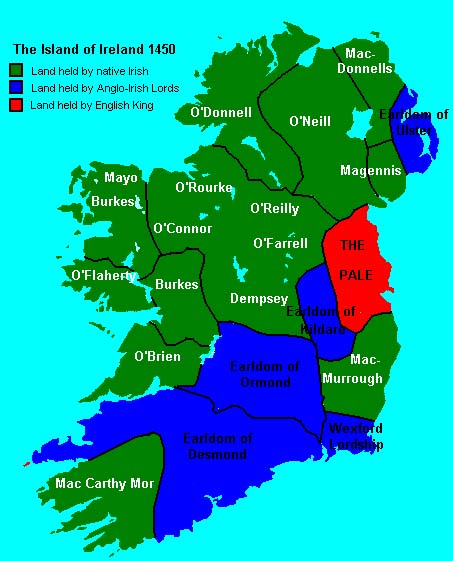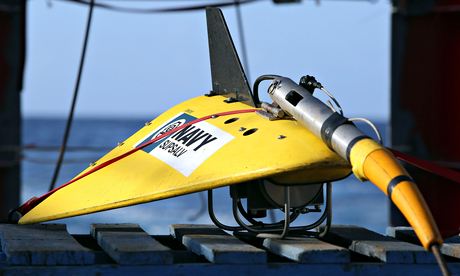Chinese ship may have found signs of the Malaysia Airlines MH370
Signals picked up by a Chinese search vessel may be “consistent with the aircraft black box”
A crew member aboard a RNZAF P3 Orion maritime search aircraft reacts as he looks at screens while flying over the southern Indian Ocean looking for missing Malaysian Airlines flight MH370 Photo: REUTERS
The hunt for the missing Malaysia Airlines plane entered a new phase on Saturday when a Chinese ship reported hearing possible signals from a “black box” flight recorder.
On day 29 of the search for Flight MH370, a series of “pings” from the depths of Indian Ocean appeared to constitute the first solid lead.
A Chinese survey vessel, Haixun 01, heard a pulse with a frequency of 37.5kHz per second – identical to the standard signal used by the locator beacon of a flight recorder.
At that moment, the ship was located west of the Australian coast – and north of the main search area – at the coordinates 25 degrees south latitude and 101 degrees east longitude.
A reporter with the Chinese state broadcaster, CCTV, who is on board Haixun, said the ship had first picked up the signal on Friday, when pings were detected intermittently for about 15 minutes. But other vessels were in the vicinity, raising the possibility that they might have been the source.
Haixun then heard the signal again on Saturday, when the pings were picked up every second for 90 seconds.
Xinhua, the official Chinese news agency, cautioned there was still no confirmation of any link with the “missing Malaysian passenger jet”. Haixun had reported hearing the “pulse signal” and was conducting further investigations, added Xinhua.
On Saturday night Air Chief Marshal Angus Houston, a retired Australian officer coordinating the search effort, said the signals had not been verified but added: “I have been advised that a series of sounds have been detected by a Chinese ship in the search area. The characteristics reported are consistent with the aircraft black box.”
The sea in this area of the Indian Ocean is about 4,500 metres deep and criss-crossed by submerged mountain ranges, with peaks rising 2,500 metres from the seabed.
Black boxes can be detected at a maximum range of about 3,000 metres, suggesting that if the signals are genuine, then Haixun must be relatively close to the target.
Objects floating in the sea, which may have been wreckage, were also photographed by a Chinese reconnaissance aircraft about 60 miles from where Haixun detected the pings.
Haixun is a patrol and survey ship operated by the China Coast Guard. Weighing 5,400 tonnes and with a length of 430ft, the vessel is capable of conducting search, rescue and survey missions thousands of miles from its home base.
Beacons attached to flight recorders send out one “ping” every second for about 30 days. The frequency is carefully chosen to distinguish the signal from the background “noise” of the ocean.
Ten military aircraft and 11 vessels are now taking part in the hunt for MH370, including HMS Echo, a Royal Navy survey ship, and HMS Tireless, a Trafalgar class nuclear submarine.
The Boeing 777, carrying 239 passengers and crew, vanished on March 8 while flying from Kuala Lumpur to Beijing.
David Johnston, the Australian Defence Minister, urged caution over the latest lead. “This is not the first time we have had something that has turned out to be very disappointing,” he said. “I’m just going to wait.”
Some of the relatives of the 153 Chinese passengers said they were already convinced the “ping” had come from the missing plane’s black box. Chen Zesheng, whose cousin was on the plane, said: “I just saw the news. Now I feel really sad. Earlier there was still a glimmer of hope.”
Mr Chen, 63, said he had become “lost and disappointed” with the so far “fruitless” search. “We still want to know what happened,” he added. “I hope the search and rescue ships, especially those from China, can carry on with their work, finding the debris of the plane as well as the passengers’ belongings [so we have] something to remind us of ours loved ones.”
The search is focusing on a large area of the southern Indian Ocean, where satellite tracking data suggests the plane disappeared after veering wildly off course.
The quest has a new urgency because the battery on the black box will run out after about 30 days. If a signal has now been detected, it will have come at the eleventh hour.
Commodore Peter Leavy, of the Australian Navy, said: “The search using subsurface equipment needs to be methodical and carefully executed in order to effectively detect the faint signal of the pinger.”
Malaysia has come under sustained criticism over a seemingly confused response to the disappearance of the airliner and a series of contradictory statements.
The mixed messages continued on Saturday when Hishammuddin Hussein, the Malaysian transport minister, denied that investigators had cleared the passengers on board MH370 of all suspicion. However, Malaysia’s police chief said last week that the involvement of any passengers in the aircraft’s fate had indeed been ruled out.
Mr Hussein also dismissed as “completely untrue” any suggestions that the Malaysian authorities themselves had been negligent.
He was apparently responding to remarks from Anwar Ibrahim, the country’s opposition leader, who told the Telegraph on Thursday that Malaysia’s authoritarian regime had consistently held back vital information.
In particular, Mr Anwar said that an advanced radar system, which he had purchased as finance minister in the 1990s, would have detected the aircraft when it turned off course and flew over Malaysia itself for about 45 minutes.
“Whether they ignored it, or failed to detect it because of incompetence is the question which has not been answered and is still being dodged by the authorities. That opens up all manner of speculation including a possible cover-up,” he said.
New Garda boss Noirin O’Sullivan says the Martin Callinan remark was unfortunate


The former Garda Commissioner Martin Callinan’s description of the actions of the garda whistleblowers as “disgusting” was “unfortunate”, according to the woman who has assumed his role.
Interim Commissioner Noirin O’Sullivan was speaking at her first public appearance, the graduation of 79 new reserve volunteers at the Garda College in Templemore, Co Tipperary.
While Ms O’Sullivan described Mr Callinan’s use of the word “disgusting” in relation to the behaviour of the whistleblowers as “unfortunate”, she said he was entitled to his opinion on the matter.
SENSITIVE
Mr Callinan made his comments before a Dail committee earlier this year.
He later clarified the remark to say he was not referring to whistleblowers John Wilson and Sgt Maurice McCabe’s character, but rather to the manner in which “personal and sensitive data” was released into the public domain.
Mr Callinan quit as Garda Commissioner almost two weeks ago, saying he was retiring in the best interests of the force and his family. He added that recent developments were a “distraction” from the important work of An Garda Siochana.
The force has been rocked by a string of controversies in recent months, including revelations of widespread taping of phone calls at garda stations.
Ms O’Sullivan yesterday promised a new era for the force in which dissent would not be viewed as disloyalty and which would embrace whistleblowers.
She said: “In any organisation as complex as An Garda Siochana there will be people who identify issues that they wish to bring to our attention and I certainly believe that those people need to be supported.”
She told garda reserve graduates that they will be called on to show courage when they take to the streets.
“You’ll need the courage to question, even when questioning irritates and infuriates people who can influence your future,” she said. “Because that’s what a good guard does.
“The fact that I came to the job of commissioner in the middle of a maelstrom of controversy means that I’ve a lot of immediate work to do. But at the same time I need to meet and listen to people at every level, from new members of the reserve to top management.”
Asked if she intended to apply for the full-time post of commissioner, she replied: “The position has not been advertised yet, but I am sure when it is, yes, I certainly will.”
Meanwhile, in an interview on last night’s Late Late Show, whistleblower John Wilson said he is happy that Justice Minister Alan Shatter has corrected the record of the Dail.
DEPLORABLE
He said: “I believe his behaviour throughout all of this in relation to the penalty points scandal has been deplorable.”
He added there is “no doubt” Mr Shatter should resign.
Referring to Mr Callinan’s decision to quit, he said: “I take no pleasure in the demise of any human being, and Martin Callinan has done this some country service, but it was the right decision to go. I believe his credibility was gone. I believe his position had become untenable.”
He also warned of further revelations in the coming months and said he had no regrets on the stance he has taken.
A further €1.4 million in funding released for the Wild Atlantic Way
This €10 million project will see tourist attractions developed along the west coast of Ireland.
A further €1.4 million in funding has been announced for the recently developed Wild Atlantic Way.
When finished, this long-distance tour route is intended to act as a key tourist attraction for the west of Ireland.
The 2,500km route will encompass 159 different attractions.
Minister of State for Tourism & Sport Michael Ring has called it a “game-changer for the west”.
He said this new funding “will make the route even more tempting and ensures that we develop its full potential to deliver and hold onto the greatest number of tourists”.
This funding will be focused on three projects in Mayo, Galway, and Cork.
More than €400,000 will see a walking and cycling trail known as the Galway Greenway completed.
When finished, the trail will contribute more than 78km to the National Cycle Network.
A visitor centre, built around a blowhole, will be developed at Downpatrick Head in Mayo using €640,000.
Close to €370,00 has been designated for the restoration of the Signal Tower at the Old Head of Kinsale in Cork.
Wet Irish summers will put our swallows under threat
)
Young Swallows flapping their wings before take-off
The population of the iconic swallow is on the decline thanks to the widening of the Sahara, wet Irish summers and Mediterranean gunmen, according to a leading bird expert.
On top of dodging nature’s predators during their epic 6,000-mile journey back from Africa every spring, the country’s swallows have to run the gauntlet of gunmen shooting them for sport as they cross through Cyprus and Malta on the migratory flyways of the Mediterranean.
Niall Hatch, from Birdwatch Ireland, said fewer and fewer swallows were returning to Ireland to nest each spring after their mammoth journey up from their wintering grounds in Johannesburg.
 “We’re seeing declines in the swallow,” Niall Hatch said. “They are nowhere near the numbers they used to be years ago.
“We’re seeing declines in the swallow,” Niall Hatch said. “They are nowhere near the numbers they used to be years ago.
“Their arrival date seems to be getting earlier, which would point to climate change having an effect on migration and the survival of the chicks seems to be a bit lower.
“The Sahara desert is getting wider each year and more arid and fewer can survive the crossing.”
While the birds also have to escape natural predators on their way, he said they were shot at for sport when flying over Malta and Cyprus.
“There are also lots of human hunters out in Egypt, Malta and Cyprus,” he said. “They catch the birds in big numbers.”
The ornithologist said the pattern towards more extreme weather in recent years also could have fatal consequences along with the effects of rain-drenched Irish summers as they had fewer flies to feed on before they leave.
He said: “They can run into terrible rainstorms and thunderstorms which can affect them. They are migrating and they are not as fit so they are less likely to return the following year.”
While he said it was still a “relatively common bird” with an estimated population of half a million, the population was on a “knife edge” as so few of the chicks survived to adulthood.
“We are encouraging people to keep an eye out for swallows, cuckoos and swift and when they find them, go to Springalive.net and post their details there and it builds into a huge database.”
4,500 year-old drowned forest path discovered near Galway Bay was used by the Celts


Remains of an ancient oak trackway found within the “drowned forest” on the north Galway shoreline.
The discovery of a pathway within a 7,500-year-old ‘drowned forest’ on the Galway shoreline has been hailed by geologists and historians as it suggests human habitation.
The Irish Times reports that the track could be between 3,500 and 4,500 years old.
It was discovered after the recent heavy storms and may have been built when the sea level was rising and was gradually enveloping the forest that pre-dated Galway Bay according to the report.
NUI Galway geologist Prof Mike Williams has researched the ‘drowned forest’ which comprises of a layer of peat and tree stumps uncovered by the winter storms.
He examined the trackway this week after he was alerted to it by Spiddal resident Alan Keogh who discovered it during a walk on the south-east Connemara shore.
Keogh told the Irish Times that he had heard about the drowned forest and recognised the significance of what appeared to be a ‘symmetrical structure’ below a line of peat.
Prof Williams told the paper: “Together with the Bearna canoe, this is the first evidence of human habitation within these forests and lagoons in this area.
“It could have been built during the late Neolithic or early Bronze age era, and may have been ceremonial or may have been built across wetland which was decaying forest, forming into bog.
“This would make it older than the Corlea togher (trackway), the Iron Age track across the boglands of Longford, close to the River Shannon.”
The report says the Corlea oak road, excavated by Prof Barry Raftery of University College Dublin, is the largest of its kind to have been uncovered in Europe.
Prof Williams added that he is awaiting further archaeological examination of the section on a storm beach near Furbo, looking south to the Burren and Black Head.
The Bearna canoe was discovered on the shore near Bearna by Brian and Rónán Ó Carra in 2002 and is preserved in the Galway Atlantaquaria in Salthill.
it was found to be 4,740 years old when radiocarbon-dated and Ó Carra believes the trackway may be of a similar age.
He said: “The canoe was freshwater, and these people used them for fishing and as a form of transport – like our stand-up paddle-boards.”
The discovery of a pathway within a 7,500-year-old ‘drowned forest’ on the Galway shoreline has been hailed by geologists and historians as it suggests human habitation.
The Irish Times reports that the track could be between 3,500 and 4,500 years old.
It was discovered after the recent heavy storms and may have been built when the sea level was rising and was gradually enveloping the forest that pre-dated Galway Bay according to the report.
NUI Galway geologist Prof Mike Williams has researched the ‘drowned forest’ which comprises of a layer of peat and tree stumps uncovered by the winter storms.
He examined the trackway this week after he was alerted to it by Spiddal resident Alan Keogh who discovered it during a walk on the south-east Connemara shore.
Keogh told the Irish Times that he had heard about the drowned forest and recognised the significance of what appeared to be a ‘symmetrical structure’ below a line of peat.
Prof Williams told the paper: “Together with the Bearna canoe, this is the first evidence of human habitation within these forests and lagoons in this area.
“It could have been built during the late Neolithic or early Bronze age era, and may have been ceremonial or may have been built across wetland which was decaying forest, forming into bog.
“This would make it older than the Corlea togher (trackway), the Iron Age track across the boglands of Longford, close to the River Shannon.”
The report says the Corlea oak road, excavated by Prof Barry Raftery of University College Dublin, is the largest of its kind to have been uncovered in Europe.
Prof Williams added that he is awaiting further archaeological examination of the section on a storm beach near Furbo, looking south to the Burren and Black Head.
The Bearna canoe was discovered on the shore near Bearna by Brian and Rónán Ó Carra in 2002 and is preserved in the Galway Atlantaquaria in Salthill.it was found to be 4,740 years old when radiocarbon-dated and Ó Carra believes the trackway may be of a similar age.
He said: “The canoe was freshwater, and these people used them for fishing and as a form of transport – like our stand-up paddle-boards.”



No comments:
Post a Comment